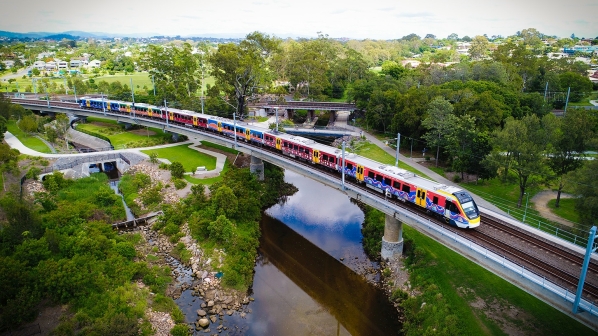THE Australasian Railway Association (ARA) has released its Faster Rail Report, prepared by Arup, which outlines a series of proposals to implement faster services on the Australian rail network.
The report highlights that the Australian rail network suffers from lower-than-average speeds compared with international counterparts and argues that a rapid programme of modernisation is necessary to accommodate for projected future population growth.
The report aims to support the goals of the Australian federal government, which has been investigating options for the development of faster regional rail services since the launch of its Faster Rail Prospectus in 2017. Support for rail speed upgrade projects was also included in the 2020-2021 Australian federal government budget.
The report defines three speed categories:
- Faster Rail, which encompasses track capable of providing services between 160km/h and 200km/h, which can be achieved by upgrading existing lines with improvements such as electrification and curve easing
- Fast Rail, which offers services of between 200km/h and 250km/h, which can be achieved through targeted improvements and new dedicated tracks built to modern standards, as well as new rolling stock, and
- High Speed Rail, which offers speeds greater than 250km/h, for which new dedicated tracks must be built to modern standards and separated from the existing rail network.
The report makes six recommendations to improve the Australian rail network:
- Move 1: Develop a long-term national rail vision and plan, including an expansion of the Faster Rail programme to commence upgrades to the regional rail network and the establishment of stakeholder and community consultation programmes
- Move 2: Support better social and economic outcomes for regions, updating regional land use and economic plans; confirming opportunities for each town along Faster Rail corridors; identifying complementary measures to improve outcomes; and engaging with communities and businesses to develop long-term plans for regional centres
- Move 3: Establish a policy framework for consistent delivery of Faster Rail recommendations, working with Infrastructure Australia to develop a place-based business case and appraisal framework that accounts for social and economic benefits; developing a national transport network plan in line with the national population and settlement strategy; and establishing a post-opening project evaluation programme for improvements
- Move 4: Establish a shared governance framework to deliver Fast Rail Recommendations, considering models that provide transport authorities the ability to develop station precincts and identifying clear responsibilities for authorities
- Move 5: Develop a coordinated funding approach, to enable all three tiers of government to work together to pledge funding for Faster Rail, developing an investment strategy for the National Rail Plan and considering a range of funding mechanisms for Faster Rail, and
- Move 6: stage and target investment in rail, including immediate addressal of regional rail deficiencies by investing in existing infrastructure to increase its speed, frequency and reliability, with a long-term strategy to further enhance rail speeds in future.
In support of Move 6, the report outlines a three-step plan to achieve faster rail:
- immediately upgrade existing rail lines to deliver faster, more reliable and frequent services
- establish new fast rail lines in the next five to 10 years, and
- prepare for high-speed rail in the long term by preserving current rail corridors now.
“With an additional 10 million people expected to move to Sydney, Melbourne or Brisbane by 2060, faster rail will be essential to support urban renewal in key regional centres,” says ARA CEO, Ms Caroline Wilkie. “Highways in and out of Sydney are already reaching capacity, which means we must invest now in faster rail to support the east coast’s sustainable development.
“For too long rail investment has lagged behind road funding and the regional rail network is now below global standards. It is time to bring Australia up to standard and tap into the new demand for regional development resulting from Covid-19.”
Regional migration survey
The report coincides with a survey of 600 regional and metropolitan residents of the Australian states of New South Wales (NSW), Victoria and Queensland, which found that faster rail connections would make people more likely to consider a move to regional (non-urban) areas after the Covid-19 pandemic.
The survey, conducted by Zing Insights on behalf of ARA, found that faster rail connections would increase the likelihood of 42% of respondents to move to a regional area.
The survey also found that city residents were more 63% more likely to move to a regional location if the travel time to the nearest city was less than an hour. 83% would be more likely to visit regional areas if travel times were less than an hour.
71% of regional residents would also consider taking the train over other modes of transport if upgrades meant that travel times to the nearest city were equal or less than they were for other modes. 84% believe faster rail connections would make their region more attractive for people considering relocating.
The survey also found that 26% of city residents would consider moving to non-urban regions, including 10% responding as “very likely”, with faster rail increasing their likelihood of making the move. Respondents from Sydney were particularly likely to want to move away, with 35% saying they would like to move to a more regional location.
The migration away from cities is also enhanced by the belief of many respondents that a return to full-time office working is unlikely following the end of the Covid-19 pandemic. 43% of respondents are currently working from home more than they did pre-pandemic. 77% of respondents expect at least some of these changes to be permanent.

